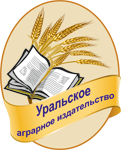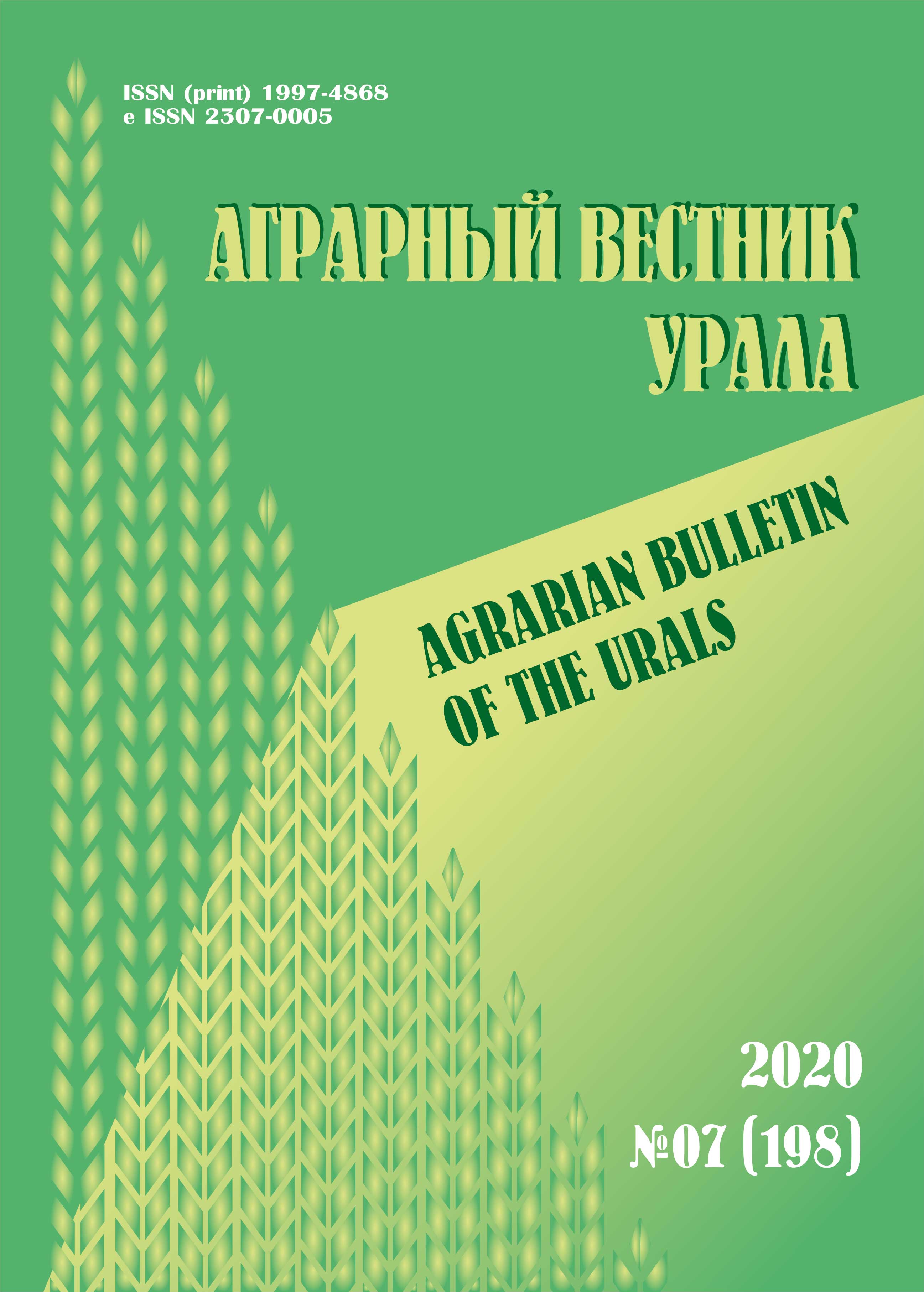Cheboksary, Cheboksary, Russian Federation
Abstract. The purpose. The level of marketability of milk in the households of the population of some subjects of the Volga Federal District from 2011 to 2021 increased by more than 20 p. p. The leader in this rating was the Chuvash Republic with the marketability of milk in the households of the population in 2021 at the level of 77.5 %. In connection with the high involvement of the population in the organized market for the sale of milk, the authors developed an economic and mathematical model for calculating the level of efficiency of dairy cattle breeding in the households of the population under various conditions and sizes of their management, and also adapted this model to calculate the efficiency of the farmers of the Chuvash Republic. Methods. The developed economic and mathematical model is built according to the structure of the economic model for automating the calculations of business concepts of small agribusiness, presented in an earlier work of the authors with adaptation to the activities of households. Scientific novelty. The work allows you to establish the most optimal options for dairy cattle breeding, depending on the objectives of management: optimization or expansion of production. Results. According to the results of the calculations, it was found that the most effective and stimulating for the development of management is the option of switching the agrarian to the payment of NAP and the use of state support provided for the self-employed. The larger the farm and the more investments the agrarian plans to make, the greater the return on state support will be. The amount of profitability in some cases exceeds 100 %. However, it is necessary to take into account the expediency of raising funds based on common sense, and not just in terms of mathematical calculations.
dairy farming, economy of the population, production organization, self-employed, professional income tax, calculation model, project business model, economic and mathematical model, increasing rural incomes
1. Afanaseva O., Ivanov E., Elmov V., Makushev A. Evaluating the digitalization potential of agro-industrial sector of Russia // IOP Conference Series: Earth and Environmental Science. Cheboksary, 2021. Article number 012036. DOI:https://doi.org/10.1088/1755-1315/935/1/012036. EDN: https://elibrary.ru/EDDXEJ
2. Afanaseva O., Ivanov E., Elmov V., Makushev A. Factors that facilitate development of small agricultural cooperative farm alliances // IOP Conference Series: Earth and Environmental Science. Cheboksary, 2021. Article number 012045. DOI:https://doi.org/10.1088/1755-1315/935/1/012045. EDN: https://elibrary.ru/ZUCCSO
3. Bashmachnikov V. F., Drokin V. V., Zhuravlev A. S. Vovlechenie krest'yanskih hozyaystv v reshenie zadach importozamescheniya // Ekonomika regiona. 2018. T. 14. № 2. S. 663-675. DOI:https://doi.org/10.17059/2018-2-26. EDN: https://elibrary.ru/RYOSKZ
4. Polunin G., Alakoz V., Cherkashin K. Regional land use by farms of the Russian Federation // IOP Conference Series: Earth and Environmental Science. Moscow, 2019. Article number 012017. DOI:https://doi.org/10.1088/1755-1315/274/1/012017. EDN: https://elibrary.ru/UKYSJH
5. Kot E. M., Zyryanova T. V., Zyryanov S. B. Vovlechenie v organizovannyy rynok takoy formy samozanyatosti v sel'skih territoriyah, kak lichnye podsobnye hozyaystva grazhdan // Agrarnyy vestnik Urala. 2020. Specvypusk «Ekonomika». S. 31-37. DOI:https://doi.org/10.32417/1997-4868-2021-13-31-37. EDN: https://elibrary.ru/QWKHUP
6. Afanas'eva O. G. Agropromyshlennyy kompleks PFO Rossii: itogi, investicii i cifrovizaciya. Moskva: Rusayns, 2022. 110 s. EDN: https://elibrary.ru/LTSBPE
7. Kondrat'ev D. V., Ostaev G. Ya., Hosiev B. N. Upravlenie razvitiem proizvodstva produkcii molochnogo skotovodstva. Izhevsk: Shelest, 2021. 242 s. EDN: https://elibrary.ru/QYZGUD
8. Kastornov N. P. Osnovnye faktory i potencial razvitiya molochnogo skotovodstva regiona // Vestnik Michurinskogo gosudarstvennogo agrarnogo universiteta. 2020. № 2 (61). S. 166-170. EDN: https://elibrary.ru/TNHMDF
9. Astuti A., Obitsu T., Taniguchi K. Effect of Milking Frequency on Body Condition Score, Somatic Cell Count, and Reproductive Performance of Dairy Cows Milked by An Automatic Milking System // IOP Conference Series: Earth and Environmental Science. 2019 Article number 012055. DOI:https://doi.org/10.1088/1755-1315/251/1/012055.
10. Gašparík M., Ducháček J., Stádník L. Impact of milking settings optimization on milk quality, milking time and milk yield in Holstein cows // IOP Conference Series: Materials Science and Engineering. 2018. Article number 012073. DOI:https://doi.org/10.1088/1757-899X/420/1/012073.
11. Gogolev I. M., Sutygin P. F., Abramova K. Yu. Innovacionnye aspekty razvitiya molochnogo skotovodstva // Problemy regional'noy ekonomiki. 2020. № 3-4. S. 106-115.
12. Afanas'eva O. G., Makushev A. E., Tolstova M. L. Issledovanie cifrovoy aktivnosti regional'nyh agrariev Rossii // Agrarnaya nauka. 2022. № 11. S. 165-173. DOI: https://doi.org/10.32634/0869-8155-2022-364-11-165-173; EDN: https://elibrary.ru/NNXNIR
13. Zhemaytuk I. E. Kto takie samozanyatye, kak poluchit' etot status i chto on daet? [Elektronnyy resurs] // Akademicheskaya publicistika. 2021. № 11-2. S. 147-154. URL: https://aeterna-ufa.ru/sbornik/AP-2021-11-2.pdf (data obrascheniya: 16.11.2022). EDN: https://elibrary.ru/QVGDCX
14. Sharipov S. A. Lichnye podsobnye hozyaystva i malyy agrarnyy biznes nuzhdayutsya v gosudarstvennoy podderzhke // Prodovol'stvennaya politika i bezopasnost'. 2020. T. 7. № 1. S. 59-70. DOI:https://doi.org/10.18334/ppib.7.1.100922. EDN: https://elibrary.ru/UJAUAX
15. Demishkevich G. M., Chepik D. A. Sovershenstvovanie innovacionnoy infrastruktury v agrarnoy sfere dlya uskoreniya cifrovizacii agropromyshlennogo kompleksa // Ekonomika, trud, upravlenie v sel'skom hozyaystve. 2020. № 12 (69). S. 72-81. DOI:https://doi.org/10.33938/2012-72. EDN: https://elibrary.ru/DFMSZX
16. Abrashkina S. N. Plyusy i minusy kategorii predprinimateley «samozanyatye» // Vestnik molodyh uchenyh Samarskogo gosudarstvennogo ekonomicheskogo universiteta. 2022. № 1 (45). S. 5-7. EDN: https://elibrary.ru/KDGBID
17. Chekmarev O. P., Lukichev P. M., Konev P. A. Samozanyatye v Rossii: legalizaciya, tendencii razvitiya i vliyanie na rynok truda // Ekonomika truda. 2022. T. 9. № 2. S. 233-248. DOI:https://doi.org/10.18334/et.9.2.114222. EDN: https://elibrary.ru/SOVKXT
18. Afanas'eva O. G., El'mov V. A., Filippova S. P., Makushev A. E. Razrabotka ekonomicheskoy modeli avtomatizacii raschetov biznes-koncepciy malyh sel'hozproizvoditeley // Agrarnaya nauka. 2022. № 11. S. 174-180. DOI: https://doi.org/10.32634/0869-8155-2022-364-11-174-180; EDN: https://elibrary.ru/IHFEJO
19. Voronova I. V., Ignat'eva N. L., Nemceva E. Yu. Sovremennye aspekty kormleniya molochnyh korov // Vestnik Ul'yanovskoy gosudarstvennoy sel'skohozyaystvennoy akademii. 2021. № 1 (53). S. 164-169. DOI:https://doi.org/10.18286/1816-4501-2021-1-164-169. EDN: https://elibrary.ru/PYYJHR
20. Voronova I. V., Ignat'eva N. L., Nemceva E. Yu. Differencirovannoe kormlenie korov na molochnom komplekse // Veterinariya sel'skohozyaystvennyh zhivotnyh. 2021. № 7. S. 58-63. EDN: https://elibrary.ru/BODDHR
21. Kto takie «samozanyatye»? [Elektronnyy resurs] // Ministerstvo sel'skogo hozyaystva Chuvashskoy Respubliki. URL: https://agro.cap.ru/banneri/gospodderzhka-grazhdan-veduschih-lichnoe-podsobnoe/kto-takie-samozanyatie (data obrascheniya: 16.11.2022).
22. Adzhikova A. S., Kancerov R. A., Shkol'nikova N. N. Gosudarstvennaya podderzhka razvitiya sel'skogo hozyaystva v regione s agrarnym profilem ekonomiki // Agrarnyy vestnik Urala. 2022. № 2 (217). S. 60-70. DOI:https://doi.org/10.32417/1997-4868-2022-217-02-60-70. EDN: https://elibrary.ru/CFLUGE
23. Latypov R. T., Maleykina G. P., Ruchkin A. V. Grantovaya podderzhka realizacii gosudarstvennyh programm i proektov po razvitiyu krest'yanskih (fermerskih) hozyaystv: opyt regiona i klyuchevye problemy // Agrarnyy vestnik Urala. 2019. № 8 (187). S. 75-90. DOI:https://doi.org/10.32417/article_5d908ec8145d33.94927172. EDN: https://elibrary.ru/MXXQCB









